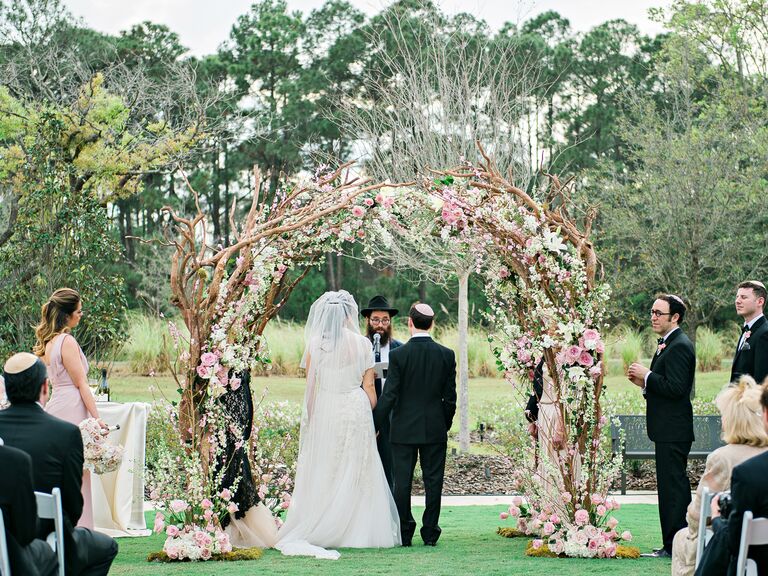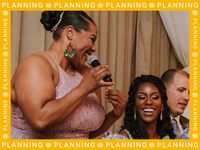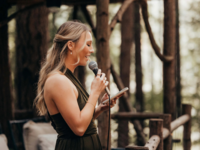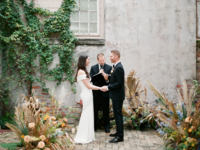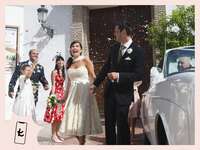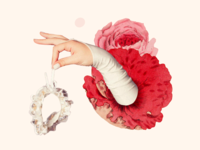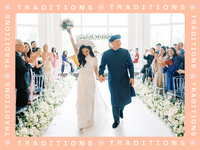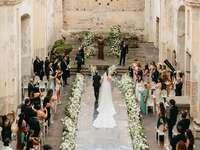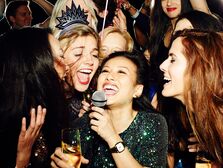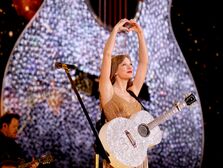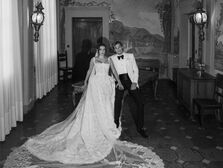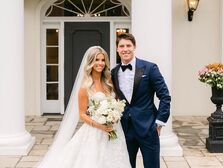Jewish Wedding Ceremony Seating, Entrances and Exits—Explained
Okay, here's the the nitty-gritty on who sits where and who walks when at a traditional Jewish wedding. Emphasis on the word traditional—if you're having a Jewish LGBTQ+ wedding, you can adapt these guidelines or toss out the rule book completely. This is simply one way of organizing your ceremony if you're a heterosexual Jewish couple. Again, if you're an LGBTQ+ couple, a non-Jewish couple, or both, you should feel completely free to simply use these traditions as inspiration (or not at all).
The Sides
The age-old tradition of "bride's side" and "groom's side" of the sanctuary stands in Judaism, but the usher doesn't need to ask whose "side" they're on. For Jewish services, the groom's side will typically make up the left and the bride's side fills the right when looking down the aisle toward the front. However, should someone express a preference for one side or the other (many guests will just say off the bat that they're friends or relatives of the bride or groom), they should be seated where they choose (makes sense, right?). If one side of the family will have significantly more guests than the other, ushers should even out the sides; they can explain that everyone will be sitting together, and that guests will have the best possible view this way.
The Processional
For Jewish services, the wedding party enters in a specific order. First, the rabbi and/or cantor; the grandparents of the bride; followed by the grandparents of the groom. (The grandparents are seated in the first rows—groom's family on the left, bride's family on the right.)
Next to come down the aisle to stand under the chuppah? The groomsmen, typically (in pairs), the best man and finally, the groom. Then the bridesmaids walk down (in order, starting with who stands farthest from the bride), the maid of honor, the ring bearer and/or flower girl (child attendants can be seated with their parents once they reach the front), and lastly, of course, the bride, escorted by her parents—typically with her father on the right and mother on her left.
The Recessional
After the ceremony, the procession is reversed, and the men in the wedding party escort the women. Think of it in pairs (in this order): the bride and groom; the bride's parents; the groom's parents; the bride's grandparents; the groom's grandparents; the ring bearer and flower girl (optional!); the maid of honor and best man; the bridesmaids and groomsmen; followed by the rabbi and/or cantor.
